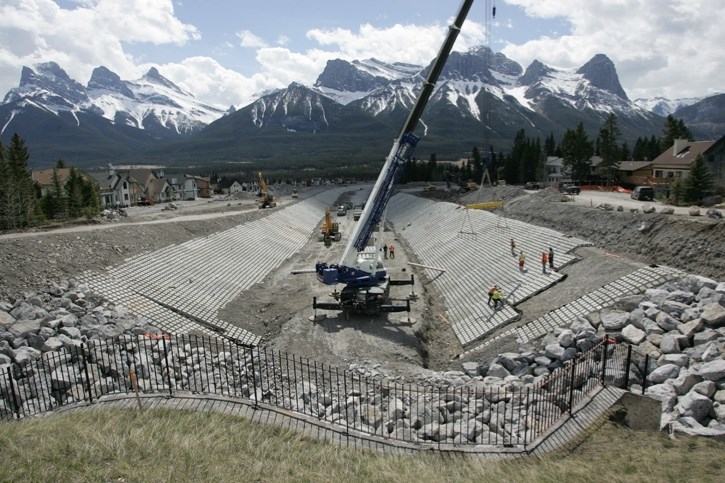CANMORE – The Town of Canmore’s application to build a debris retention structure on Cougar Creek is one step closer to actually starting with a major regulatory process being met at the end of March.
With almost five years having passed since the mountain creeks of the valley filled with debris and water, causing millions of damage to homes and evacuating residents of Cougar Creek, the municipality has a complete environmental impact assessment with Alberta Environment and Parks.
The environmental impact assessment (EIA) report was originally submitted in July 2016, but municipal project manager Felix Camire explained the province undertakes a thorough review of the report, its terms of reference and followup requests for supplemental information before deeming it complete.
“They run their own impact analysis … then look at our terms of reference and make sure we have looked at all the questions,” Camire said. “To go through (the process) we had to do supplemental studies and put more things together, so we had to work with different consultants to ensure all the questions were properly answered.
“They look at all that and as soon as the reviewers are happy we have answered all the questions, they deem the EIA complete.”
The complete EIA, however, does not mean the Town is ready to tender the $46 million debris retention structure. It actually triggers the next phase of the regulatory process, which is a review by the Natural Resources Conservation Board.
The NRCB application started this month with a public feedback and review process, which lasts until May 22. The semi-governmental body then determines if the project is in the best interest of the public and reviews public feedback.
The decision the NRCB makes at the end of May could be to approve the project, or it could require public hearings be held, which could add another six months to the process timeline.
“The real question is: is the NRCB going to feel they have to hold public hearings on it?” said Mayor John Borrowman. “I would hope not, because the NRCB can run it through their process internally.”
Even with several years dedicated to the approval process, Borrowman said the municipality has learned a lot when it comes to the issue of steep creek hazards and risks to the community.
Camire said if the NRCB approves the application without a public hearing, the Town could be ready to tender the project and be into the ground by the fall. However, the municipality still needs to obtain approval under the Water Act for the structure to be built, and a land disposition agreement with AEP.
“We are running the EIA and dam safety processes in parallel,” he said. “Because this is a public safety project, (the province) agreed to run both and that is why we are actually ahead in time compared to following the regular process.
“Once the NRCB says yes, it is definitely a green light and the project will go ahead, but the next step is to work with AEP to get all the permits in place.”
The debris retention structure was proposed a year after the 2013 floods hit Canmore, is designed to stop 650,000 cubic metres of water and sediment and would be 30-metres tall.




